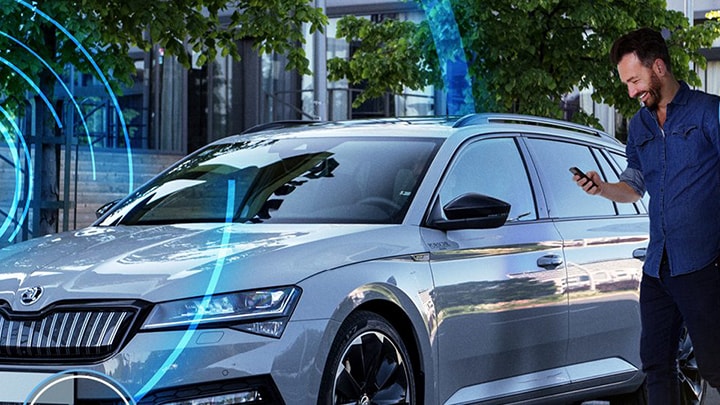Author

NXP
At NXP, innovation is always now, but our focus is always the future. Our dedicated team of experts is united by a passion to make everyday life more remarkable through technologies that continually redefine life as we know it.

You can’t see it, touch it or hear it – yet Wi-Fi® has had a tremendous impact on the modern world – and will continue to do so. From our home wireless networks, to offices and public spaces, the ubiquity of high speed connectivity without reliance on cables has radically changed the way computing happens. It would not be much of an exaggeration to say that because of ready access to Wi-Fi, we are consequently able to lead better lives – using our laptops, tablets and portable electronics goods in a far more straightforward, simplistic manner with a high degree of mobility, no longer having to worry about a complex tangle of wires tying us down.
Though it may be hard to believe, it is now two decades since the original 802.11 standard was ratified by the IEEE®. This first in a series of blogs will look at the history of Wi-Fi to see how it has overcome numerous technical challenges and evolved into the ultra-fast, highly convenient wireless standard that we know today. We will then go on to discuss what it may look like tomorrow.
While we now think of 802.11 wireless technology as predominantly connecting our personal computing devices and smartphones to the Internet, it was in fact initially invented as a means to connect up humble cash registers. In the late 1980s, NCR Corporation, a maker of retail hardware and point-of-sale (PoS) computer systems, had a big problem. Its customers – department stores and supermarkets – didn’t want to dig up their floors each time they changed their store layout.
A recent ruling made by the FCC, which opened up certain frequency bands as free to use and inspired what would be a game-changing idea. By using wireless connections in the unlicensed spectrum (rather than conventional wireline connections), electronic cash registers and PoS systems could be easily moved around a store without the retailer having to perform major renovation work.
Soon after this, NCR allocated the project to an engineering team out of its Netherlands office. They were set the challenge of creating a wireless communication protocol. These engineers succeeded in developing ‘WaveLAN’, which would be recognized as the precursor to Wi-Fi. Rather than preserving this as a purely proprietary protocol, NCR could see that by establishing it as a standard, the company would be able to position itself as a leader in the wireless connectivity market as it emerged. By 1990, the IEEE 802.11 working group had been formed, based on wireless communication in unlicensed spectra.
Using what were at the time innovative spread spectrum techniques to reduce interference and improve signal integrity in noisy environments, the original incarnation of Wi-Fi was finally formally standardized in 1997. It operated with a throughput of just 2 Mbits/s, but it set the foundations of what was to come.
Though the 802.11 wireless standard was released in 1997, it didn’t take off immediately. Slow speeds and expensive hardware hampered its mass market appeal for quite a while – but things were destined to change. 10 Mbit/s Ethernet was the networking standard of the day. The IEEE 802.11 working group knew that if they could equal that, they would have a worthy wireless competitor. In 1999, they succeeded, creating 802.11b. This used the same 2.4 GHz ISM frequency band as the original 802.11 wireless standard, but it raised the throughput supported considerably, reaching 11 Mbits/s. Wireless Ethernet was finally a reality.
Soon after 802.11b was established, the IEEE working group also released 802.11a, an even faster standard. Rather than using the increasingly crowded 2.4 GHz band, it ran on the 5 GHz band and offered speeds up to a lofty 54 Mbits/s.
Because it occupied the 5 GHz frequency band, away from the popular (and thus congested) 2.4 GHz band, it had better performance in noisy environments; however, the higher carrier frequency also meant it had reduced range compared to 2.4 GHz wireless connectivity. Thanks to cheaper equipment and better nominal ranges, 802.11b proved to be the most popular wireless standard by far. But, while it was more cost effective than 802.11a, 802.11b still wasn’t at a low enough price bracket for the average consumer. Routers and network adapters would still cost hundreds of dollars.
That all changed following a phone call from Steve Jobs. Apple was launching a new line of computers at that time and wanted to make wireless networking functionality part of it. The terms set were tough – Apple expected to have the cards at a $99 price point, but of course the volumes involved could potentially be huge. Lucent Technologies, which had acquired NCR by this stage, agreed.
While it was a difficult pill to swallow initially, the Apple deal finally put Wi-Fi in the hands of consumers and pushed it into the mainstream. PC makers saw Apple computers beating them to the punch and wanted wireless networking as well. Soon, key PC hardware makers including Dell, Toshiba, HP and IBM were all offering Wi-Fi.
Microsoft also got on the Wi-Fi bandwagon with Windows XP. Working with engineers from Lucent, Microsoft made Wi-Fi connectivity native to the operating system. Users could get wirelessly connected without having to install third party drivers or software. With the release of Windows XP, Wi-Fi was now natively supported on millions of computers worldwide – it had officially made it into the ‘big time’.
Read on:
Part 2: Wi-Fi on the run for speed improvements
Part 3: The future of Wi-Fi
NXP’s Wi-Fi portfolio

At NXP, innovation is always now, but our focus is always the future. Our dedicated team of experts is united by a passion to make everyday life more remarkable through technologies that continually redefine life as we know it.

July 15, 2020
by Tom Pannell

July 28, 2020
by Markus Levy

August 4, 2020
by Ron Martino